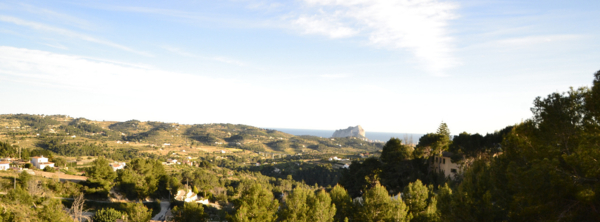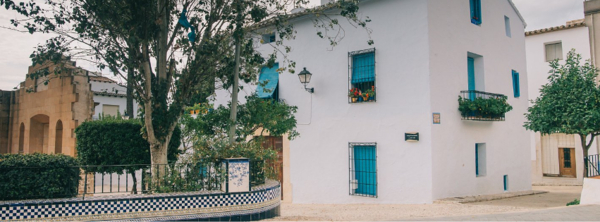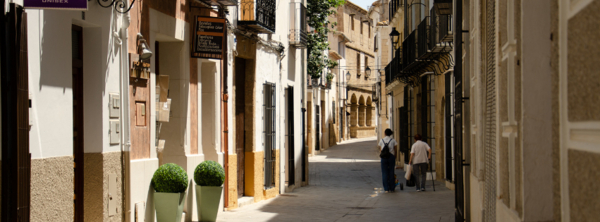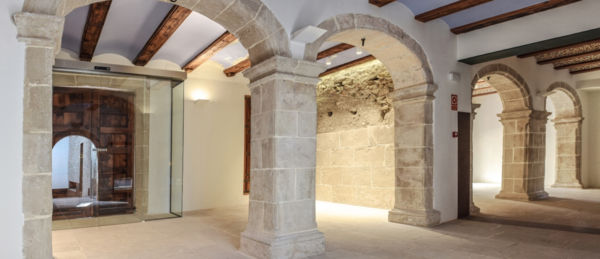Inclusive Tourism

We in Benissa are very aware of the fact that we are not all equally able to move to and access the places we would like to know and visit. For this reason, we are hard at work every day to improve the options we can offer to anyone with impaired physical or sensory abilities.
We will regularly update this section with a list of local services that have been adapted for people with impaired mobility in our quest to constantly improve and to tear down any obstacles met by this group.
The coastline

La Fustera beach is the largest and best-equipped beach on the Benissa coastline. Its services include options geared towards easing access for people with impaired mobility.
The beach has reserved parking spaces for the disabled practically on the beach front with no architectural barriers whatsoever. Thus, people with reduced mobility or differently abled people can safely and easily go for a swim by getting out of the car just by the seaside. Furthermore, an amphibious chair service is available in the morning during the summer months.
With regards to the rest of the coastline, the parking lots at Les Bassetes, the Tourist Info Benissa beach area, and the cove at Pinets, L’Advocat and Baladrar have reserved parking spaces for people with impaired mobility.
The Town

There are guided tours through the historical town centre of Benissa that are suited for people with impaired mobility.
We recommend following this adapted route to enjoy Benissa to the fullest:
You can start from the erstwhile eastern entrance of the town walls: Plaza del Portal ♿. This is the location of the former Municipal Hospital, which currently hosts the headquarters of the Town Hall, as well as an old property now owned by the Abargues Foundation.
Around the corner of Plaza del Portal, you can begin your trip through Medieval Benissa with the cozy “Placeta de l’Església Vella” (Old Church Square). There you can admire the image of the Medieval fortified church that stood in Benissa for centuries by admiring the painted tiles and a replica of the church façade, which reveal a massive construction with a twofold role: on the one hand, as the house of God, and, on the other, as a fortress for locals to defend themselves from the pirate raids that once laid waste to the coastline…

Calle Puríssima ♿ will allow you to experience the look of a Valencian town in the Renaissance, with its latticed balconies, its paved streets, and the contrast between the whitewashed walls and the rough-hewn stone.
Benissa has renovated its heritage and given it a new lease on life for public cultural purposes. This is the case of the University headquarters ♿ located in the old Andrés and Pere Bigot stately homes, which you can access by previously requesting that an access ramp be installed.
Calle Puríssima also features the oldest public building in Benissa: the Sala del Consell ♿, which was once used as the town hall, prison and legal archive, and which is currently houses the town's interpretation center. Practically in front of it lies the Cases del Batlle. Salvador Soria Contemporary Art Space ♿, which you can visit to see how the former mayor’s residence is now a beautiful architectural space that hosts the municipal library and museum of contemporary art.

Moving on you will find the Monument to the Riberer ♿, which pays homage to the labourers who used to travel on foot from Benissa to work in the rice harvest in the fields by the river Júcar. In front of it lies the Torres-Orduña palace, which is now a Cultural Hall ♿.
Near the monument is the house of Juan Vives, where the story of the miracle of the Puríssima Xiqueta, who was consecrated as the patron saint in 1864, began.
You can complete your tour of the historical town centre by visiting the Basilic of the Puríssima Xiqueta ♿ whose large size and peculiar neo-Gothic style is one of the defining features of the Benissa skyline no matter from where you look at it. It was under construction from 1902 to 1929 with the physical labour of all locals, and it is known in the area as the “Cathedral of La Marina”.
An increasing number of infrastructures are either adapted or provide facilities on demand:
Accesible monuments:
-
Cultural hall. Auditorium and municipal cinema
Featured accessible facilities:
-
The municipal swimming pool, during the summer months
- Ortopèdia Bondia . This company leases mobility devices
